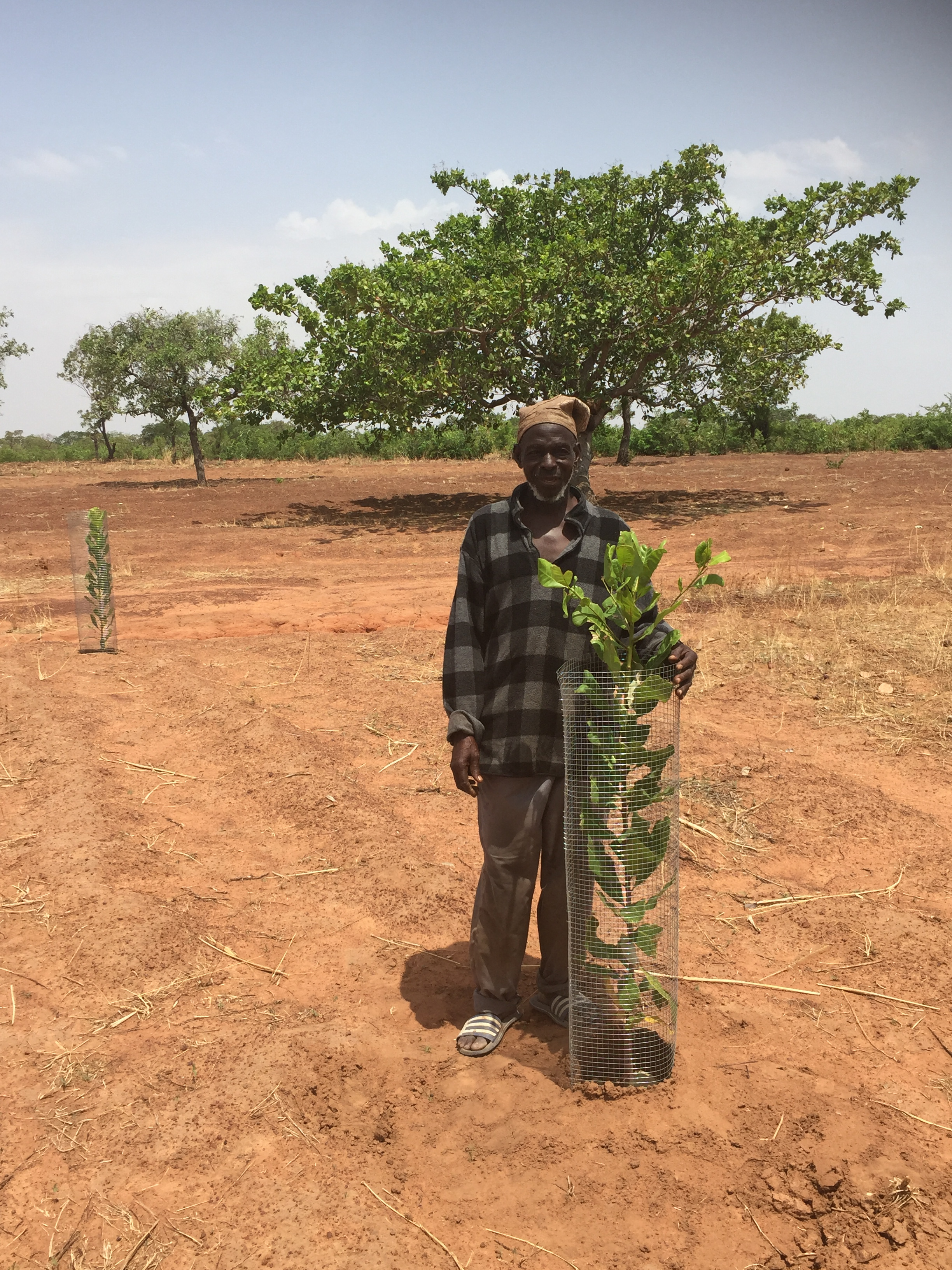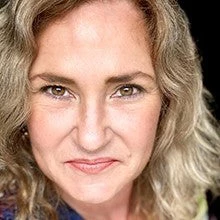Environmental degradation puts livelihoods at risk and the Ghanaian government is determined to fight it. Planting trees is one approach to address soil erosion, topsoil quality and overgrowth of weeds and grass that lead to wildfire. This is why the World Bank’s Sustainable Land and Water Management Project (SLWMP) offers free seedlings to farmers to plant trees at a cost of about $100 per farmer. The question researchers asked at the time of project design was, would free seedlings be enough? Would monetary incentives to farmers be needed for farmers to plant and secure the survival of the required forty trees? The question turned into a Payment for Environmental Services (PES) uniform price auction experiment that would investigate farmers’ reservation prices and willingness to participate. The initial payments to these farmers were set at 380 Ghanaian Cedi (GHS) (or about USD 80) by asking expert opinions from extension workers. It is with this level of financial support that farmers like the one in West Mamprusi District planted their cashew trees in 2016. He is pictured here standing next to his neat row of cashew trees, that are well fenced-in to protect them from animals, with moist soil surrounding the seedlings.

Photo credit: Paul Christian
The results of the PES experiment showed massive increases in farmer take-up and got the government interested in scaling PES up. The icing on the cake is that the team found a way of expanding the PES component without increasing its cost. The results showed that payments increased household uptake from 18% in the control group, to 28% in the project areas, to 88% in the PES experiment. Such a large increase in uptake was bound to capture government attention and stimulate their willingness to scale up. Yet resource constraints must be contended with as well as thinking about the optimal intervention design for the project overall given differential in costs per farmer and the transaction costs per community.

Is it ever possible to expand the PES component under a fixed budget? The team used the data obtained through the uniform price auction [1] to suggest a way forward. The uniform price auction (UPA) is a tool from behavioral economics that reveals the minimum payment that each farmer would be willing to accept while fixing the amount that the project team will pay farmers. First, farmers are asked to state the minimum price they would accept for planting trees. Once all farmers have stated their bid, the fixed payment amount is revealed, and all farmers who stated a price less than or equal to the project’s agreed price are enrolled in the program and those who stated a higher price are not enrolled. All participating farmers are paid the fixed price, even if their bid was lower (see Jack, 2013).
As it turned out, at the initial payment amount of GHS 380 (the “best guess” from extension workers), almost everyone in the treated communities takes up the program. The near universal popularity of the offer sounds great at first, but the results of the auction show that this payment comes at a high cost: at GHS 380, 94% of farmers who participate in meetings to consider the offers [2] take up the program in those communities, but the vast majority of them would participate for substantially less. Paul Christian explains that “Through a simple simulation, we demonstrated to the government that by lowering payments per farmers to just 200 GHS, they could save 56% of their budget.” Apply those resources to incentivize new communities, and the total number of farmers planting trees would increase by a 68%, a huge margin of improvement.

And what about optimal design? This is what the team will be focusing on next by thinking through the next set of operational questions: what is the relationship between per farmer costs and per community transaction costs? Is it better for the project to maximize take up in a few communities and avoid additional transaction costs or expand geographically while incurring those costs? Clearly PES increases costs per farmer by about fifty percent but it also lowers the needs to reach out to more communities to achieve a target number of farmers and a target number of trees. One hypothetical simulation shows that seedlings plus optimally-priced PES dominates seedlings only when transaction costs are in excess of $3,000 per community.
This said, increasing returns on the PES component alone by 68% is no small feat, especially when all the team used is data on the process of implementation, and evidence on farmers’ participation and willingness to participate. Often when we think of the value of research, we focus on the extensive margin: have the results of a piece of research influenced policy making? This is an example of the intensive margin of being there: having collected data and developed a better understanding of the economic parameters, we can use our presence to help projects understand how to do better, in this case, how to set pricing as to maximize returns to investment. Often thought of as a luxury, research can instead be the bread and butter of development practice.

Photo credit: Paul Christian
The results of the PES experiment showed massive increases in farmer take-up and got the government interested in scaling PES up. The icing on the cake is that the team found a way of expanding the PES component without increasing its cost. The results showed that payments increased household uptake from 18% in the control group, to 28% in the project areas, to 88% in the PES experiment. Such a large increase in uptake was bound to capture government attention and stimulate their willingness to scale up. Yet resource constraints must be contended with as well as thinking about the optimal intervention design for the project overall given differential in costs per farmer and the transaction costs per community.

Is it ever possible to expand the PES component under a fixed budget? The team used the data obtained through the uniform price auction [1] to suggest a way forward. The uniform price auction (UPA) is a tool from behavioral economics that reveals the minimum payment that each farmer would be willing to accept while fixing the amount that the project team will pay farmers. First, farmers are asked to state the minimum price they would accept for planting trees. Once all farmers have stated their bid, the fixed payment amount is revealed, and all farmers who stated a price less than or equal to the project’s agreed price are enrolled in the program and those who stated a higher price are not enrolled. All participating farmers are paid the fixed price, even if their bid was lower (see Jack, 2013).
As it turned out, at the initial payment amount of GHS 380 (the “best guess” from extension workers), almost everyone in the treated communities takes up the program. The near universal popularity of the offer sounds great at first, but the results of the auction show that this payment comes at a high cost: at GHS 380, 94% of farmers who participate in meetings to consider the offers [2] take up the program in those communities, but the vast majority of them would participate for substantially less. Paul Christian explains that “Through a simple simulation, we demonstrated to the government that by lowering payments per farmers to just 200 GHS, they could save 56% of their budget.” Apply those resources to incentivize new communities, and the total number of farmers planting trees would increase by a 68%, a huge margin of improvement.

And what about optimal design? This is what the team will be focusing on next by thinking through the next set of operational questions: what is the relationship between per farmer costs and per community transaction costs? Is it better for the project to maximize take up in a few communities and avoid additional transaction costs or expand geographically while incurring those costs? Clearly PES increases costs per farmer by about fifty percent but it also lowers the needs to reach out to more communities to achieve a target number of farmers and a target number of trees. One hypothetical simulation shows that seedlings plus optimally-priced PES dominates seedlings only when transaction costs are in excess of $3,000 per community.
This said, increasing returns on the PES component alone by 68% is no small feat, especially when all the team used is data on the process of implementation, and evidence on farmers’ participation and willingness to participate. Often when we think of the value of research, we focus on the extensive margin: have the results of a piece of research influenced policy making? This is an example of the intensive margin of being there: having collected data and developed a better understanding of the economic parameters, we can use our presence to help projects understand how to do better, in this case, how to set pricing as to maximize returns to investment. Often thought of as a luxury, research can instead be the bread and butter of development practice.
[1] The experiment involving the UPA auction is described in detail in
Van Soest, Turley, Christian, van der Heijden, and Kitessa, 2018.
[2] That 94% leads to 88% percent of households participating because not everyone comes to the meeting to hear the offer.


Join the Conversation